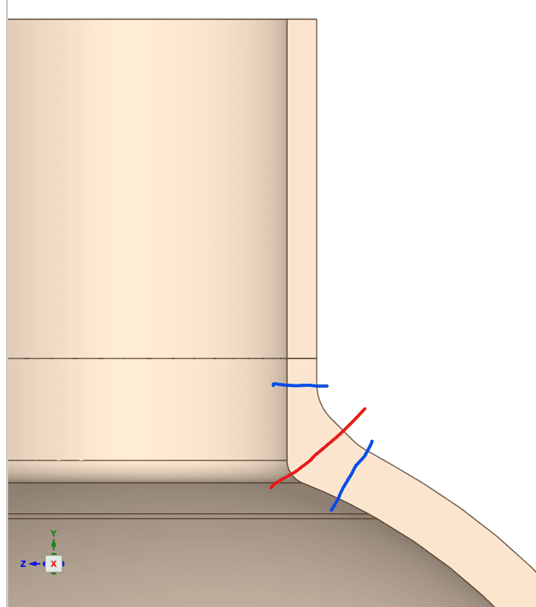Below is a section view of a 3D vessel/nozzle junction. When doing FEA for ASME pressure vessels, I have always taken a stress classification line (SCL) through the nozzle crotch region (i.e., red line in the image). I would also take blue lines for completeness. I would linearize the stresses and qualify the locations to ASME requirements. This is what I was taught many years ago while working at a well-known nuclear power OEM that shall remain unnamed.;-) And the reasoning dated back to an old Welding Research Council publication. A new colleague at a new company recently debated the topic with me, asserting that the red classification line shall never be taken. Rather the blue lines are acceptable linearization lines. So I have two questions:
[ul]
[li]Is the red classification line an inappropriate cut to take? If so, why?[/li]
[li]If YES to above, how are the stresses in the crotch region qualified to code?[/li]
[/ul]

[ul]
[li]Is the red classification line an inappropriate cut to take? If so, why?[/li]
[li]If YES to above, how are the stresses in the crotch region qualified to code?[/li]
[/ul]

